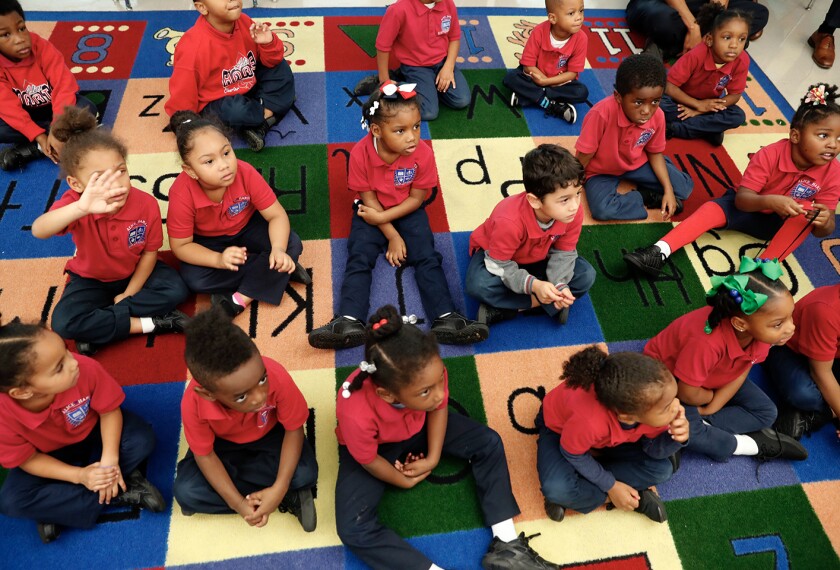A proposal in Michigan to change regulations governing child-care centers has alarmed children’s advocates and has even drawn criticism from the speaker of the state House. The revisions generating the most controversy include those that stipulate the staff-to-child ratio, the size of indoor and outdoor play spaces, and certain sanitary procedures, such as diapering and handwashing.
Children’s advocates, including many who have flocked to public hearings for the chance to express their opposition, are angry over a plan to increase from four to eight the number of children, between the ages of 23 months and 2½ years, who can be under the supervision of one adult.

|
“That is the age range when they are the most active. One person couldn’t possibly handle eight,” said Kay Hollestelle, the director of the Children’s Foundation. Her Washington-based child-advocacy organization publishes an annual review of state licensing rules for both child-care centers and licensed home-based providers.
If implemented, Michigan’s new guidelines--which would not affect home-based providers--would reduce from 10 to eight the number of 2½- to 3-year-olds that one caregiver may supervise.
In answer to protests, the ratio for the younger age group might be changed in the final version.
Officials of the state’s office of consumer and industry services, which is handling the already overdue rewrite of the rules, say their intentions have been misunderstood, and that setting minimum standards for the state’s 4,700 centers does not mean the state is discouraging high-quality child care.
“We’ve got to be careful that what we do doesn’t price too many parents out of the market,” said Maura Campbell, a spokeswoman for the agency. “It’s not that we are against high quality, but we have to balance it with access to care.”
For example, advocates would like the agency to add training requirements for child-care employees. The proposed rules would allow anyone who is at least 17 years old, has passed a tuberculosis test, and hasn’t been convicted of child abuse, neglect, or a felony involving harm or threatening harm, to work at a center.
While it’s unlikely that “a huge new training requirement” would be added, Ms. Campbell said Gov. John Engler, a Republican, has in place a $1.1 million initiative to train child-care workers.
But Mark Sullivan, the executive director of Michigan Community Coordinated Child Care, a resource and referral agency, said that money will only train 6,000 providers, or about 10 percent in the state. “That’s not a lot of money,” he said.
National Trends
Increasing the minimum number of training hours required for child-care providers has become a common move in many states, Ms. Hollestelle said. “Some states are even requiring more preservice as well as ongoing training.”
She added, however, that while most states have determined which crimes would prohibit individuals from being hired as caregivers, most states still do not require fingerprinting or background checks.
|
Michigan Speaker of the House Charles Perricone, a Republican, has been a vocal opponent of some of the proposed changes, including those that would lift specific square-footage requirements for indoor and outdoor activity areas. The proposed rules simply say those spaces must be “adequate” or “sufficient.”
Even after meeting with Kathleen M. Wilbur, the director of consumer and industry services, Mr. Perricone still has concerns, said Lorri Rishar, his spokeswoman. She added that writing the licensing requirements into state law--instead of just administrative rules--is an option. If that happens, “it would take an act of the legislature to change” the requirements.
Ms. Campbell stressed that just because the rules might not be as explicit as before, it doesn’t mean child-care centers won’t have to meet certain requirements; the intention is to allow flexibility.
Mr. Sullivan argued that child care centers would rather follow a written standard than have to create one of their own.
“This is the second time the governor has gone after child-care rules under the guise that it’s the consumer’s responsibility to find quality care,” he said.
The agency will accept comments until Oct. 28. The earliest the rules are expected to go into effect is late February.





